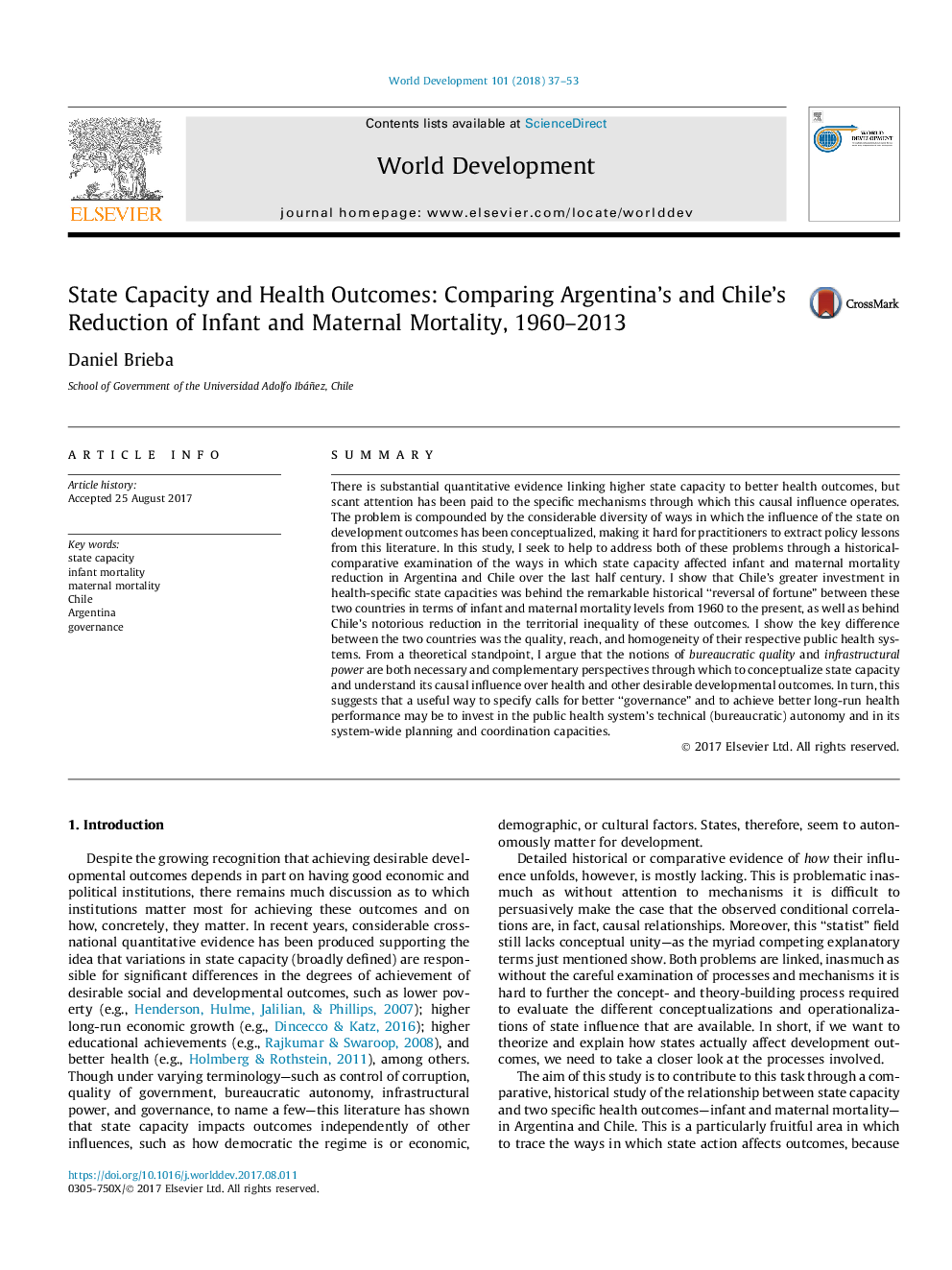| Article ID | Journal | Published Year | Pages | File Type |
|---|---|---|---|---|
| 5104985 | World Development | 2018 | 17 Pages |
Abstract
There is substantial quantitative evidence linking higher state capacity to better health outcomes, but scant attention has been paid to the specific mechanisms through which this causal influence operates. The problem is compounded by the considerable diversity of ways in which the influence of the state on development outcomes has been conceptualized, making it hard for practitioners to extract policy lessons from this literature. In this study, I seek to help to address both of these problems through a historical-comparative examination of the ways in which state capacity affected infant and maternal mortality reduction in Argentina and Chile over the last half century. I show that Chile's greater investment in health-specific state capacities was behind the remarkable historical “reversal of fortune” between these two countries in terms of infant and maternal mortality levels from 1960 to the present, as well as behind Chile's notorious reduction in the territorial inequality of these outcomes. I show the key difference between the two countries was the quality, reach, and homogeneity of their respective public health systems. From a theoretical standpoint, I argue that the notions of bureaucratic quality and infrastructural power are both necessary and complementary perspectives through which to conceptualize state capacity and understand its causal influence over health and other desirable developmental outcomes. In turn, this suggests that a useful way to specify calls for better “governance” and to achieve better long-run health performance may be to invest in the public health system's technical (bureaucratic) autonomy and in its system-wide planning and coordination capacities.
Related Topics
Social Sciences and Humanities
Economics, Econometrics and Finance
Economics and Econometrics
Authors
Daniel Brieba,
